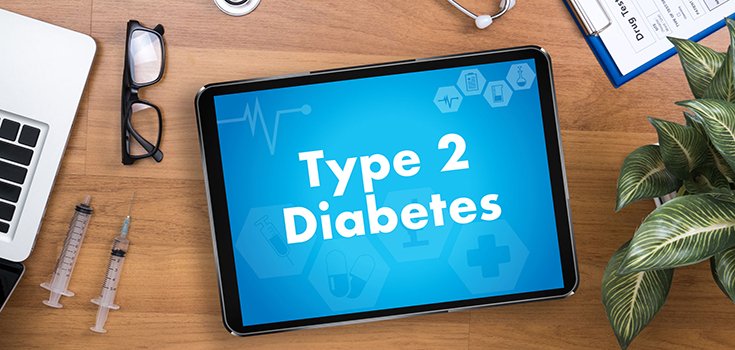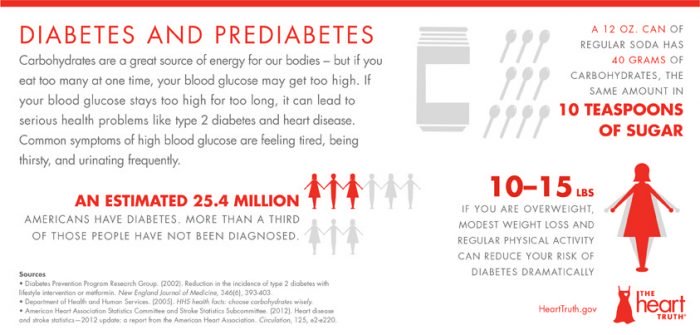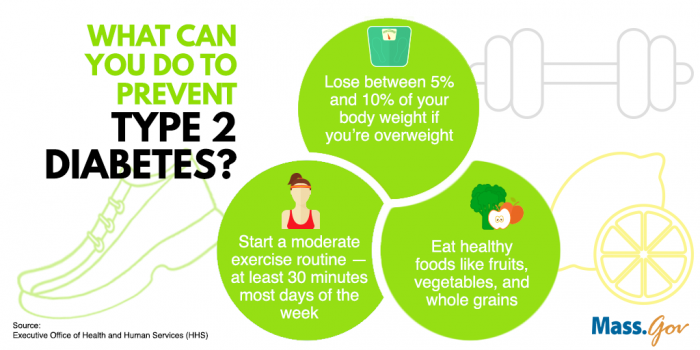Signs of Type 2 Diabetes Can be Spotted 20 Years Before it’s Diagnosed

The early signs of Type 2 diabetes can be detected more than 20 years before a person receives a diagnosis, a new study shows. This is great news because it means the disease can be stopped in its tracks before it has a chance to wreak havoc on the body. [1]
Researchers said that they were able to detect increased fasting glucose, higher body mass index (BMI), and impaired insulin sensitivity up to 10 years before a diagnosis of diabetes or prediabetes.
Lead author Dr. Hiroyuki Sagesaka said:
“As the vast majority of people with Type 2 diabetes go through the stage of prediabetes, our findings suggest that elevated metabolic markers for diabetes are detectable more than 20 years before its diagnosis.”
A person with prediabetes will have blood glucose levels that are higher than normal, but not high enough to be considered diabetes. While prediabetes puts a person at higher risk for heart disease and stroke, it is an opportunity to make lifestyle changes, such as losing weight and reducing sugar intake, to stave off full-blown diabetes. Prediabetes is sometimes referred to as “borderline diabetes.” [1] [2]

For the study, the team tracked the trajectories of fasting blood glucose, BMI, and insulin sensitivity in participants who developed diabetes and participants who developed prediabetes. Of the more than 27,000 participants, 15,778 had a normal blood glucose level at the beginning of the study, while 4,781 developed prediabetes during the research. [3]
At the beginning of the study in 2005, the researchers measured the participants’ fasting glucose and average blood glucose (HbA1c) and followed them until they developed Type 2 diabetes or prediabetes, or the end of 2016, whichever came first. [1]
Fasting blood glucose is a measurement of a person’s blood glucose level after fasting for 8-10 hours. HbA1c is a measurement of a person’s average blood glucose levels over 2-3 months. [3] [4]
Past studies have shown that risk factors like obesity and elevated blood glucose may be signs of impending diabetes up to 10 years before a diagnosis. However, it was unclear until now at what point those risk factors developed into prediabetes or diabetes. [1]
Over the 11-year study period, 1,067 people developed Type 2 diabetes. The study showed that those individuals had a higher BMI, elevated blood glucose, and insulin resistance up to 10 years before they were diagnosed. These conditions worsened as the participants inched closer and closer to full-blown diabetes. [3]
For example, participants with a fasting blood glucose level of 101.5mg/dL went on to develop type 2 diabetes 10 years later, unlike those with 94.5mg/dL.
Normal blood glucose is considered less than 100mg/dL; prediabetes is 100-to-125mg/dL; and diabetes is more than 126mg/dL.
In the study, those with a fasting blood glucose of 105mg/dL developed Type 2 diabetes 5 years later, and those with 110mg/dL did so 12 months later.
The study showed that blood sugar levels were a reliable predictor of prediabetes decades before a participant developed the condition.
Sagesaka said:
“Because trials of prevention in people with prediabetes seem to be less successful over long-term follow-up, we may need to intervene much earlier than the prediabetes stage to prevent progression to full-blown diabetes. A much earlier intervention trial, either drug- or lifestyle-related, is warranted.”
Risk Factors for Type 2 Diabetes
- Overweight or obesity
- Inactivity
- Family history
- Race – African-Americans, Hispanics, American Indians, and Asian-Americans are at higher risk
- Age – Your risk for Type 2 diabetes increases as you age
- Gestational diabetes – If you developed gestational diabetes while you were pregnant, you have a greater risk of prediabetes and diabetes
- Polycystic ovarian syndrome
- High blood pressure
- Abnormal cholesterol and triglyceride levels

5 Ways to Reduce Your Risk, Naturally
- Drink 3-4 cups of coffee a day (black – skip the sugar)
- Adopt a plant-based diet
- Start adding ginger to a smoothie, meat dish, curry, salad dressing, or capsule
- Get enough sleep
- Follow a Mediterranean-style diet
Sources:
[1] Daily Mail
[2] WebMD
[3] Daily Mail
[4] Diabetes UK
[5] Mayo Clinic

With this logic, we can spot in the yet to be conceived baby, just by looking at the health habits of the parents.
I began a low carb, high good fat, moderate protein way of eating about 26 months ago right after my diagnosis as diabetic. My last screening which was about a week ago showed that I am now pre-diabetic according to my number. My theory is that the longer a person is insulin resistant, the longer it takes to reverse it. I will continue doing what I’m doing until I am no longer diabetic. I am on no diabetes medications nor have I ever been.